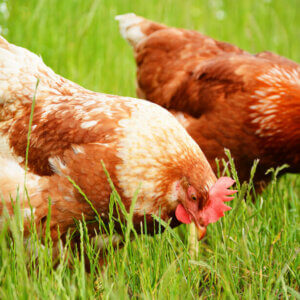A member of the honeysuckle family, the common elderberry (Sambucus nigra subsp. canadensis), also known as American elder, wild elder, sweet elder, dwarf elder, hairy blue elderflower, European elder or Tree of Music, is a dense, woody shrub.

It grows wild across the northern reaches of the United States and in the southern provinces of Canada. Although elderberry does not lend itself well to commercial cultivation, it is commonly grown in homestead gardens.
Elderberry Plants For Landscaping
Homesteaders, practicing conservation and agroforestry land management methods, establish elderberry plants as buffers and windbreaks. Elderberry plants are also established to create a small, intensive planting of elderberries as a cash crop for a profitable harvest to sell at local farmers markets.
Related Post: Introduction to Agroforestry: What It Is and How to Successfully Implement It on Your Homestead
Elderberry is also useful for property improvement purposes. Dependent on the variety, the hardy shrub typically grows to a mature height of 12 to 18 feet with a graceful, arching form, and produces clusters of deep-purple or burgundy-red fruit with prominent seeds.
Hummingbirds love the sweet nectar of the sweetly fragrant flowers. The dense, white clusters, vibrant green leaves, and deep purple fruit clusters make elderberry an attractive ornamental as well as a fruit-bearing shrub.
Providing energy and protein, elderberry, especially red elderberry, provides excellent cover and food for birds as well as small and large mammals. A versatile plant, elderberry is also used to make insecticide and dye.
Elderberries Are Tasty, But Tart
Elderberries are seldom consumed fresh due to their extremely tart taste. Both cultivated and wild elderberries can be processed, either alone or in combination with other fresh fruit and berries.
If you have not tasted elderberry fritters, you are in for a tasty treat. The entire flower is dipped in an egg batter, fried, drained and sprinkled with powdered sugar. The delicate flavor of elderberry flowers provides an aromatic flavor boost to pancakes, waffles and cakes. Elderberry is also used as a food colorant in natural food products.
Popular for its use in jams, jellies and juices, the purple-black fruit of the elderberry shrub is also used in wine and a diverse array of medicinal applications. An excellent source of vitamin C, elder, or elderberry, is considered one of the most useful medicinal plants in Mother Nature’s medicine chest.
Practitioners of alternative medicine recommend elderberry supplements for colds and to relieve symptoms of the flu. Both the flowers, commonly called elderflower, and the dried berries, or elderberries, are used in tinctures and teas.
Elderberry Cultivation
Elderberry thrives in moist, well-drained, nutrient-rich soils, but is tolerant of most soil conditions. However, elderberry plants do best when grown in soil with a pH of 5.5-6.5.
Experienced elderberry growers suggest taking a soil sample to your local county extension for testing and amending as recommended to reach the ideal soil pH. Elderberry plants are available for purchase online or from local home and garden centers.
Experienced growers suggest an open, sunny location away from woodlands and with free air movement, to reduce the problem of disease, insect infection and bird damage. All varieties of elder can be cultivated in United States Plant Hardiness Zones 3 through 8.
Keep in mind, some types of elderberry do best in cold climates, so be sure to determine if the variety you wish to establish in the homestead garden is the right choice for your climate conditions.
Preparing The Soil
Select a sunny spot with excellent drainage. While elderberries love lots of moisture, they don’t do well in areas that tend to accumulate standing water. To prepare the planting area, cultivate the soil, removing rocks, weeds and debris.
Because elderberries are a perennial crop, proper soil preparation is required. Take a soil sample to your local county extension office for testing to determine existing pH and nutrient levels. Amend as recommended.
Soil with low fertility will benefit from a generous application of aged herbivore manure (cow, sheep, horse, goat, llama). Work the manure into the soil and water well.
Selecting Plants
Elderberry plants can be purchased online from a reputable plant nursery of from local home and garden centers. Look for healthy plants without leaf or root damage. Be sure to keep roots moist before planting.
Elderberry does best when planted in the spring. Although all cultivars of elderberry are partially self-fruited, cross-pollination promotes a more abundant harvest. So, plant several cultivars nearby.
Planting Elderberry
Keep in mind that elderberry is a broad, arching shrub. It requires room to grow and plenty of air circulation. Plant 18-24 feet apart. Homesteaders that are planting elderberry as a cash crop or for a windbreak or sound buffer suggest planting in staggered rows in a checkerboard pattern.
Establish elderberry plants by planting to the same depth at which they grew in the nursery. The planting hole should be broad and deep enough to allow roots to spread out. Add water as you add soil around the roots to prevent air pockets. After planting water well.
Suppress weed germination and increase soil moisture retention by mulching around the base of elderberry plants with a heavy layer of well-aged garden compost, pine straw, leaves, hay, straw or dried grass clippings.
Moisture Requirements
Elderberries require water, at least 1 to 2 inches per week from the time the blooms first appear to the end of the harvest season. During periods of drought, supplemental irrigation should be provided for optimum fruit production.
Pruning Elderberry Plants
Avoid pruning during the first two years of growth. This is a time for the plants to grow vigorously and establish themselves in their environment. After the second year’s harvest, prune any dead or broken branches.
Pruning should be done in the spring. Be sure to remember to sterilize your pruning tools prior to and after use to not transfer disease. Removing older canes will help encourage fruit production and new cane growth.
Harvest Time
Elderberry typically fruits in late summer or early autumn. The ripe clusters are easy to harvest.
Refrigerate fruit after picking, as heat reduces quality and generates spoilage. A well-managed elderberry plant will produce up to 15 pounds of fruit each season by the time the plant is 3 to 4 years old.
Elderberries can be dehydrated or canned as syrup, jam or jelly. At the holidays, I enjoy sharing gifts from produce grown in my homestead gardens. Cordials, crafted from the fruits of autumn, are perfect for gift-giving.
Elderberry Myths And Legends
Native to Africa and Asia, the elder tree, including the flowers, fruit, leaves, bark and roots, hold a prominent place in European history.
Elderberries are closely associated with Celtic myths. Elder Mother, a kindly spirit said to inhabit the elder tree is believed to induce vivid dreams, provide protection and remove negative influences and evil spells.
Elderberry oil was traditionally used in blessing ceremonies, and the branches and leaves of the tree hung in doorways and windows to protect those that lived within. Planted near a kitchen doorway, elder was believed to ward off disease.
Traditionally used to ward off winter maladies, elderberry tonics and tinctures are a rich source of antioxidants, bioflavonoids, iron, potassium, and vitamins A, B6 and C.
History notes that within Christian traditions, the elderberry shrub was symbolic of dark times: sadness and death. The cross on which Jesus was crucified is believed to be made from the wood of the elder tree.
Elder also played a role in a diverse array of Christian burial rituals. Native Americans utilized the wood from dead elderberry canes to craft combs, spoons and baskets. A dye made from the fruit was used to color animal hides and to embellish feather ornamentations.
Elderberry, Blackberry, And Plum Cordial Recipe
Ingredients
- 3 cups fresh elderberries
- 2 cups fresh blackberries
- 1 cup dried rosehips
- 2 cups chopped fresh purple plums
- 2 cups honey
- 6 tablespoons freshly grated orange peel
- 2 tablespoons freshly grated lemon peel
- 4 teaspoons finely minced fresh ginger
- 1 teaspoons ground cloves
- 6 cups of brandy
Directions
- Clean elderberries by rinsing the berry clump in cool water.
- Strip the berries from the stems with a dinner fork. Rinse, removing any stem pieces or bits of elder leaf: pit and chop plums.
- Grate citrus peel. Peel and mince ginger.
- Add fresh berries, rosehips, plums, honey, citrus zest, ginger and spices to a sterilized gallon, glass jar.
- Add brandy to fill the jar, covering with a lid. Label the jar with the date and contents.
- Place the jar in a cool, dark place for 6 months before decanting.
To decant, slowly pour the liquid from the jar through multiple layers of cheesecloth over a large mixing bowl. After all the liquid has dripped through the cheesecloth, squeeze the cloth to obtain the last of the juice.
Using a funnel, pour the liquid into decorative glass decanters for storage or gift-giving.
References
- Red Elderberry, United States Department of Agriculture
- Elderberry, University of Kentucky Cooperative Extension
- Plant Guide — Elderberries, United States Department of Agriculture
- Elderberry, National Center For Complementary and Integrated Health
- Elderberry, Ontario Ministry of Agriculture









































I’m a big fan of growing elderberries but, if I don’t cover the bushes with netting, greedy birds eat the berries before they can even ripen. First time growers should be aware of this possibility.
thanks so much for your article on elderberries, I love the jelly but very hard to find. I am afraid to pick what I think are elderberries out here in the country to do my own jam/jelly but I do so love the taste. I did order some plants 3 years ago and now I know why they aren’t doing very well. Thanks again for the great article!
I know we have some elderberries, but the birds and bear usually get them before we can. I thought there were some others as well, but the berries turn pink before they turn dark purple or black. I read that they may be a wild raisin? Any ideas?